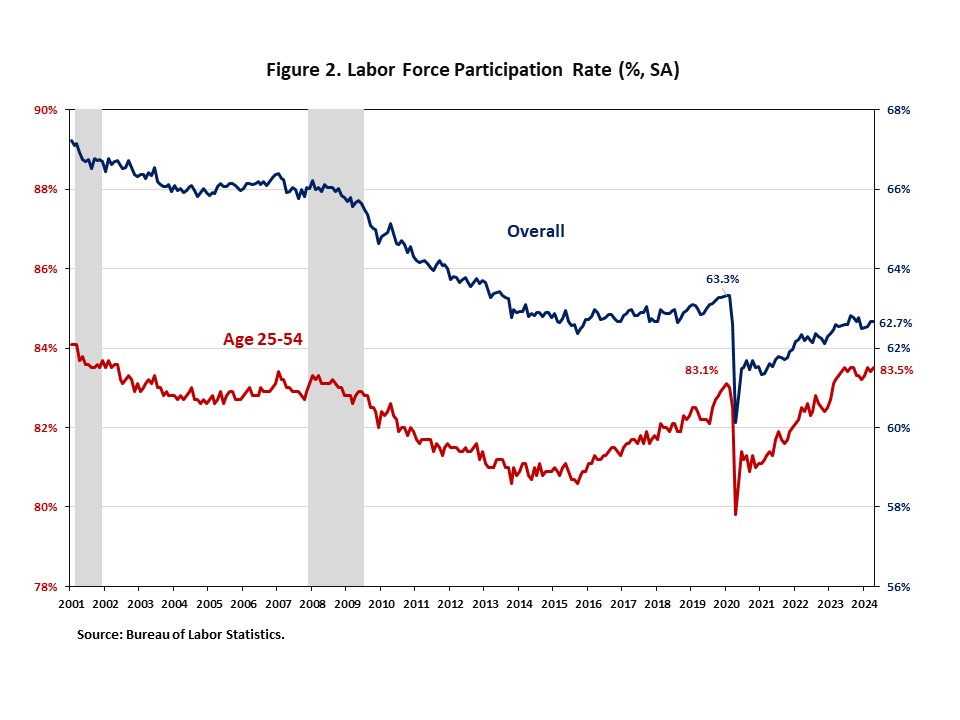Job growth slowed in April, and the unemployment rate increased to 3.9%, suggesting a cooling labor market after a strong start to the year.
Additionally, wage growth continued to slow. In April, wages grew at a 3.9% year-over-year (YOY) growth rate, down 0.7 percentage points from a year ago. It marks the lowest YOY wage gain in nearly three years.

Total nonfarm payroll employment increased by 175,000 in April, following the upwardly revised increase of 315,000 jobs in March, as reported in the Employment Situation Summary. This marks the slowest monthly gain in the past 13 months. The monthly change in total nonfarm payroll employment for February was revised down by 34,000, from +270,000 to +236,000, while the change for March was revised up by 12,000, from +303,000 to +315,000. Combined, the revisions were 22,000 lower than the original estimates. Despite restrictive monetary policy, nearly 7.4 million jobs have been created since March 2022, when the Fed enacted the first interest rate hike of this cycle. In the first four months of 2024, 982,000 jobs were created, and monthly employment growth averaged 246,000 per month, compared with a 251,000 monthly average gain for 2023.
In April, the unemployment rate rose to 3.9%, from 3.8% in March. It has remained below 4% for the 27th straight month, the longest streak since the 1960s. The number of unemployed persons rose by 63,000, while the number of employed persons rose by 25,000.
Meanwhile, the labor force participation rate, the proportion of the population either looking for a job or already holding a job, held at 62.7% for April. Moreover, the labor force participation rate for people aged between 25 and 54 ticked up to 83.5%. While the overall labor force participation rate is still below its pre-pandemic levels at the beginning of 2020, the rate for people aged between 25 and 54 exceeds the pre-pandemic level of 83.1%.

In April, job gains occurred in health care (+56,000), social assistance (+31,000), transportation and warehousing (+22,000), retail trade (+20,000), and construction (+9,000).
Employment in the overall construction sector increased by 9,000 in April, following an upwardly revised 40,000 gains in March. While residential construction gained 1,100 jobs, non-residential construction employment added 7,800 jobs for the month.
Residential construction employment now stands at 3.4 million in April, broken down as 950,000 builders and 2.4 million residential specialty trade contractors. The 6-month moving average of job gains for residential construction was 5,217 a month. Over the last 12 months, home builders and remodelers added 75,600 jobs on a net basis. Since the low point following the Great Recession, residential construction has gained 1,375,000 positions.
In April, the unemployment rate for construction workers rose to 4.8% on a seasonally adjusted basis. The unemployment rate for construction workers remained at a relatively lower level, after reaching 14.2% in April 2020, due to the housing demand impact of the COVID-19 pandemic.

Discover more from Eye On Housing
Subscribe to get the latest posts sent to your email.

Keep up the great work! Thank you so much for sharing a great posts.